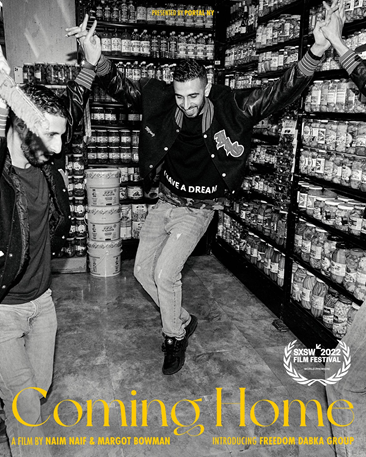
Finely Sliced: Why Editing Is Like Cooking with Aika Miyake

A creative force beloved by clients for her verve and originality, Aika Miyake brings a natural gift for editing to Cut+Run. Fast, slow, wild, and wonderful -- she can edit it all. A member of Free The Work, Aika is known for evocative and imaginative work, spanning many genres and styles. Where travel is her inspiration, editing is her life’s calling. The Tokyo-raised, California-educated Aika Miyake is a former drummer who professes to see edits like rhythms. The result is work that thrums with a heartbeat, with soul. Aika has collaborated with the likes of Wieden + Kennedy, Nike, Dentsu, TBWA, Mercedes Benz, and BMW. Among her noted work, Guinness’ “Liberty Fields” was honored at the AICP Next Awards, and she was nominated in the editorial category at Cannes for Nike “Air Force One.” Aika also works in longform and edited the Chef’s Table BBQ episode “Rosalia Chay Chuc.”
LBB> The first cut is the deepest: how do you like to start an editing project?
Aika> I start by watching the footage closely, marking the spots of clips I like, and understanding what I’ve got. Editing can feel like cooking - where directors provide amazing ingredients and I get to help assemble them to create the meal. I do look at storyboards and creative decks to understand what we are trying to achieve as a result, but I’m also looking out for any extra creative moments I could put together.
LBB> Non-editors often think of editing just in technical terms but it’s integral to the emotion and mood of a film. How did you develop that side of your craft?
Aika> Emotion is the key. You have to live your life and experience a depth of feelings in order to recreate in edits. Also, a sense of rhythm is very important. At age 10, I started playing percussion at school and I've learnt Djembe as an adult. Djembe has 4 sounds and one of them is silence. This philosophy really helped me develop my style of editing.
LBB> How important is an understanding of story and the mechanics of story?
Aika> It’s very important! One thing I find interesting is that some storyline needs explanation before it unfolds and some needs after. I usually try to avoid text explanations at the top. This always feels like giving out too much information too early and ruins the experience of the story gradually unfolding.
LBB> Rhythm and a sense of musicality seem to be intrinsic to good editing (even when it’s a film without actual music) – how do you think about the rhythm side of editing, how do you feel out the beats of a scene or a spot? And do you like to cut to music?
Aika> It’s 'Polyrhythm' for me (also called Cross-rhythm, the simultaneous combination of contrasting rhythms in a musical composition). The editing is like making music with audio, visuals, and story woven together to create much bigger feelings.
LBB> Tell us about a recent editing project that involved some interesting creative challenges.
Aika> 'Coming Home' by Naim Naif and Margot Bowman was both an exciting and challenging project to edit. It’s about Palestinian diaspora dance group in Brooklyn, NY. They perform a dance called Dabka which is Middle Eastern traditional folk dance. The group is not political at all but the subject is, and we wanted to be very mindful of how we portrayed the story. It was challenging to find the right balance. Also, It was shot on BW 16mm films with limited footage, so as an editor, it was very exciting to come up with style and story while using almost 100% of setups they filmed. It premiered at SXSW 2022 short doc category and I was there to witness. It was very special to see my own work on a big screen with people laughing and crying together.

LBB> In the US we know that editors are much more heavily involved across the post production process than in Europe - what’s your favourite part of that side of the job?
Aika> As much as I love creating my first cut, I love collaborating with amazing directors and creatives. I find new ideas exciting to try and coming up with creative solutions buzzing up my brain.
LBB> Which commercial projects are you proudest of and why?
Aika> Naomi Osaka’s first Nike commercial was a very special one for me. It was originally a very simple one-take concept but I couldn't resist cutting them up to create the perfect lead up to the conclusion. Naomi is one of my favorite tennis players/humans and I was proud when the client greenlighted the almost same version to my editor’s cut. Also, working with amazing creatives at W+K Tokyo is always a treat. I feel like people sometimes mistake good editing with a particular visual style or super dense art direction. It really comes down to how editing serves the story or can transport audiences - and that can stem from a simple yet powerful idea or subject.
LBB> Who are your editing heroes and why? What films or spots epitomise good editing for you?
Aika> I religiously studied Peter Wiedensmith’s edits and even went to meet him in person twice. P&G 'Thank You Mom' Campaign Ad: "Best Job" for London 2012 Olympic Games is still my bible.
LBB> How does editing in the commercial world differ from the film world and TV world?
Aika> Feature length docs and narratives are more about the depth of each character. I find it more philosophical to approach these edits. The decisions of style, pacing, music, etc. are driven from the depth of characters and the larger narrative, whereas the stylistic approach to commercials often originates from the aesthetics, copy, and brand goal. Both excite me, but for different reasons.













